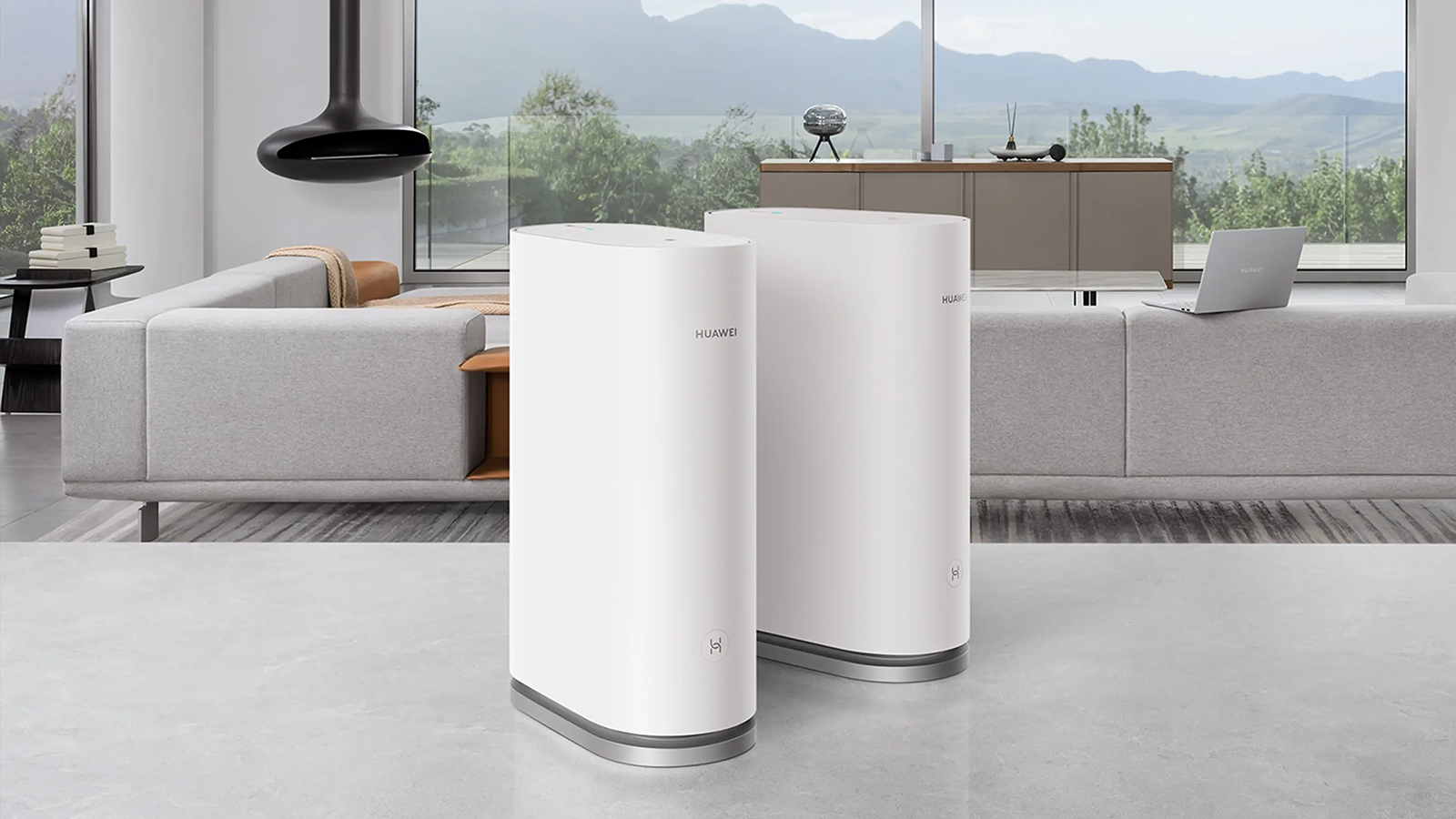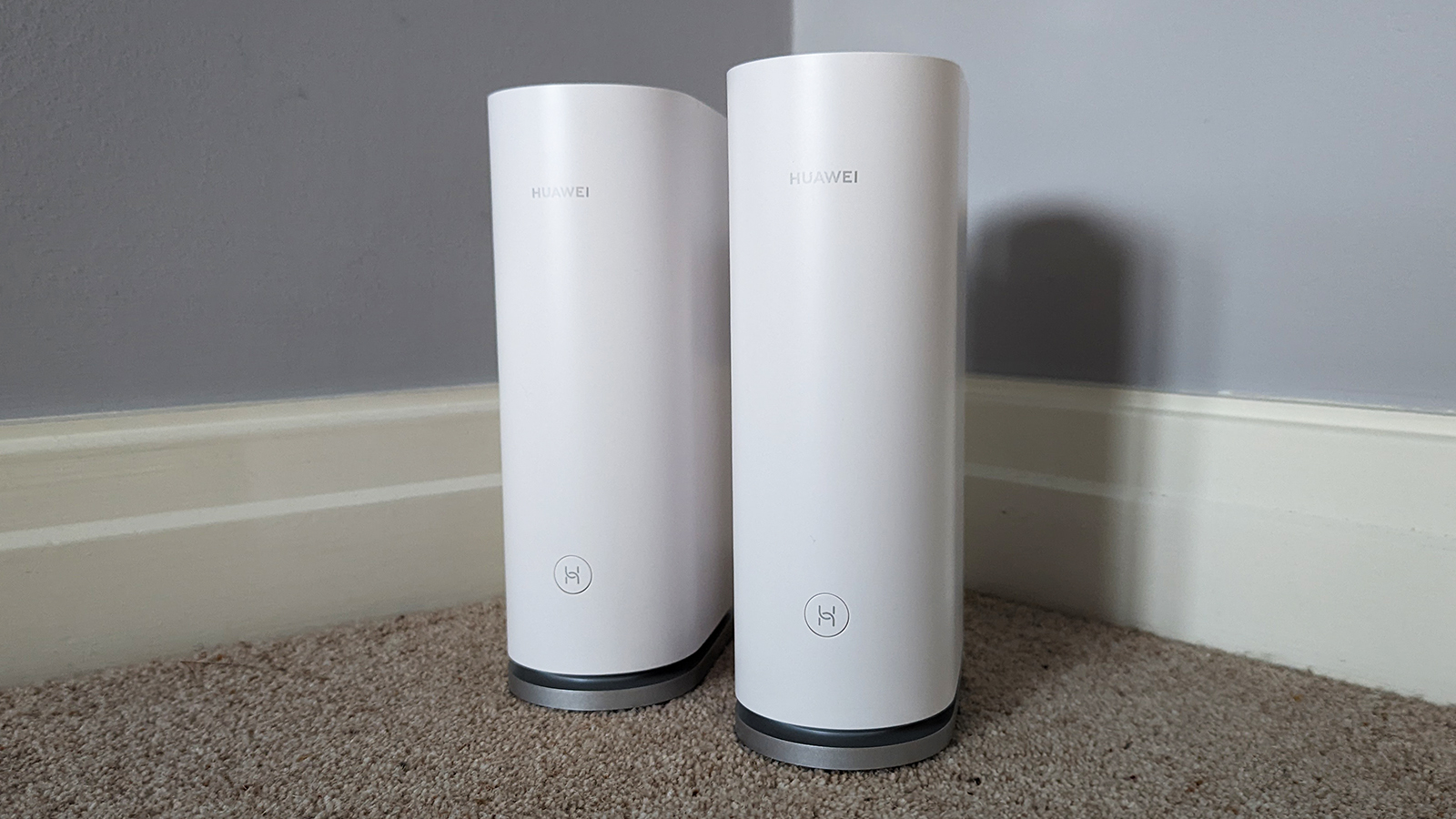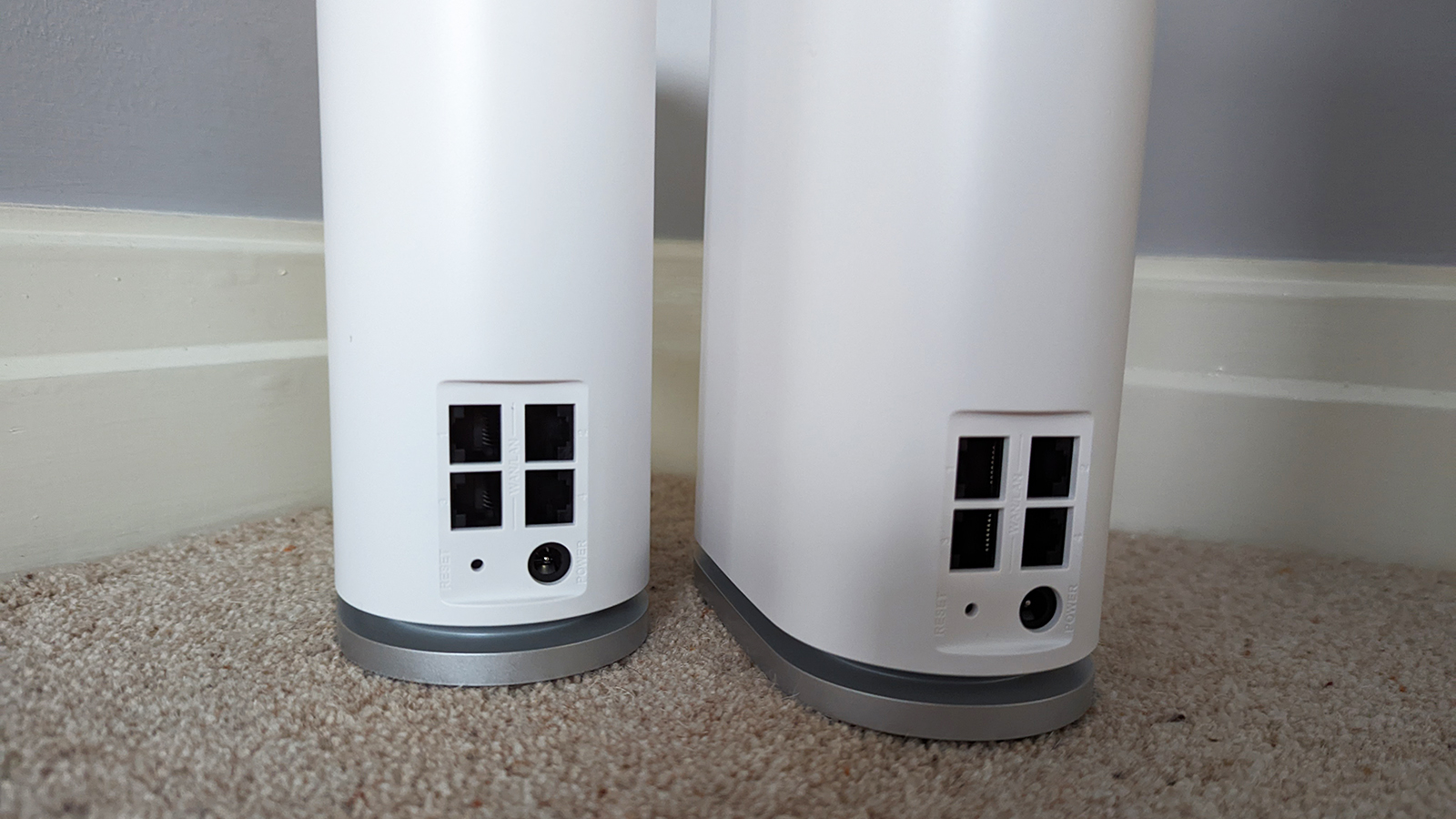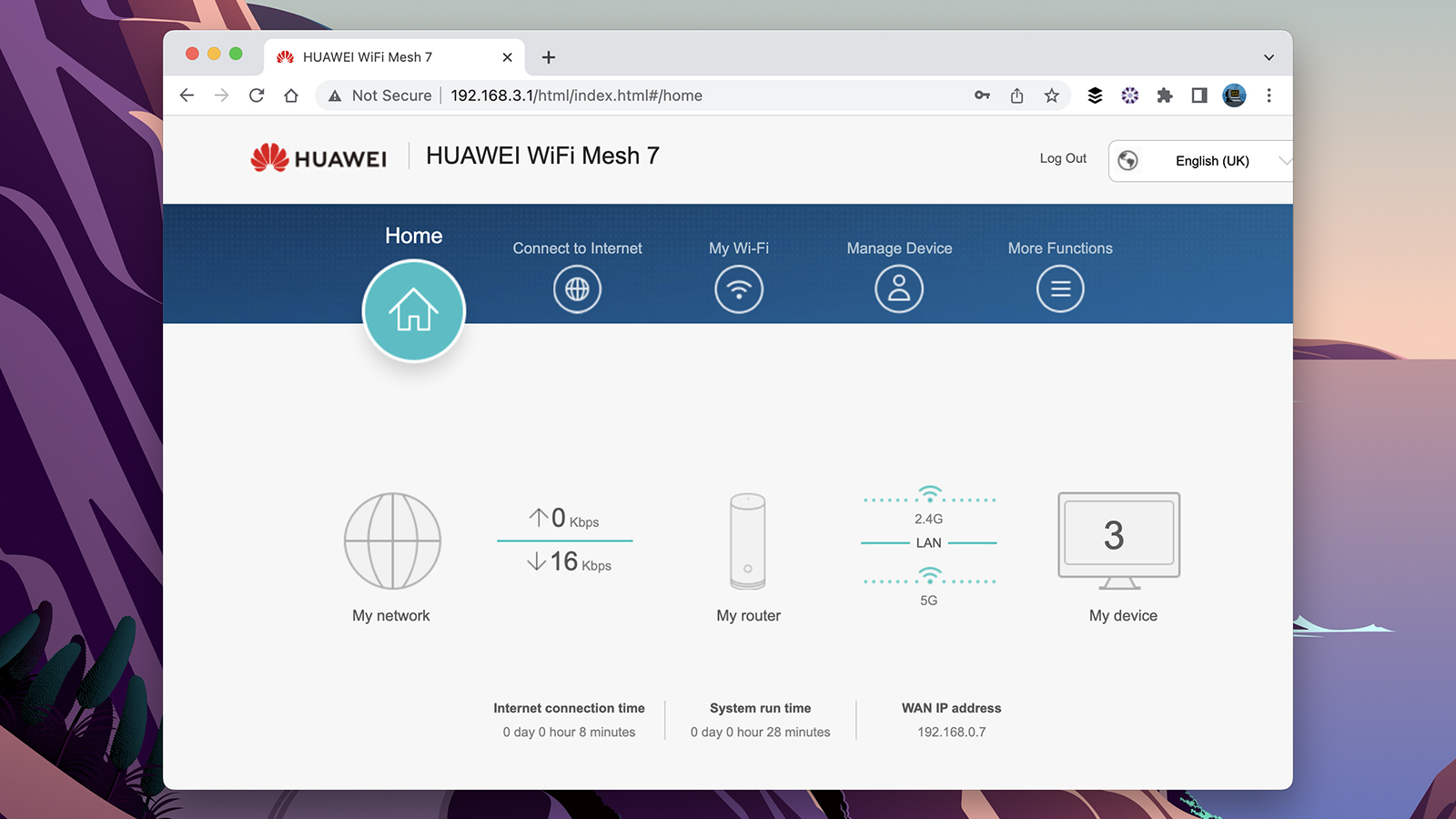Huawei Wi-Fi Mesh 7 review: a well-priced, tri-band Wi-Fi 6 package
The Huawei Wi-Fi Mesh 7 focuses on what's important


If you want solid, extensive, reliable Wi-Fi 6 coverage around your home, and are less worried about extras – such as a polished app or advanced router settings – then the two-pack Huawei Wi-Fi Mesh 7 could be the value-for-money solution that you need.
-
+
Solid Wi-Fi performance
-
+
Relatively affordable price
-
+
Four wired ports per unit
-
-
Fiddly setup
-
-
Uninspiring design
-
-
No Wi-Fi 6E
Why you can trust T3

The Huawei Wi-Fi Mesh 7 wants to be one of the best mesh Wi-Fi systems around, particularly for those shopping at the budget end of the market – it comes in at a price well below some of its rivals, though of course there are trade-offs to talk about too.
That's not to say that it's the cheapest Wi-Fi 6 mesh option, but in terms of features versus price it hits a certain sweet spot. Just how good your mesh system needs to be depends on various factors, including the size of your home and how many gadgets you've got.
Our detailed Huawei Wi-Fi Mesh 7 will tell you everything you need to know about whether or not this is the right buy for you. You can also solve your Wi-Fi dead zone problems with our guides to the best Wi-Fi extenders and the best Wi-Fi 6 routers.
Huawei Wi-Fi Mesh 7: price & availability
You can buy the Huawei Wi-Fi Mesh 7 as a standalone router, as a router plus a satellite, or as a router plus two satellites. It's the two-pack we're covering here, the router and the satellite, and that's going to set you back around £330 in the UK from retailers such as Amazon. Check the widgets on this page for the latest and best prices across the web.
Huawei Wi-Fi Mesh 7 review: design & setup

We're not actually sure if it's possible to make mesh network systems look appealing from an aesthetic point of view, and the Huawei Wi-Fi Mesh 7 doesn't really settle the debate either way. These are relatively tall (221mm) curved blocks of plastic, and while they're kind of sleek they're also kind of dull and boring – they're also quite difficult to hide away on shelves and desks.
The router and satellite units are exactly the same, with a power socket, a reset button, and four Gigabit Ethernet ports that can also be used to hook up the main router bringing internet into your home. We do like the coloured LED status lights on the top of each unit.
Once you've got everything connected, the quick-start guide advises using a web browser on your phone or computer for setting up the system. Getting everything working can be a bit tricky – there were a couple of times when screens would hang when we were trying to save settings like the Wi-Fi password we wanted to use with the router, but we got there in the end. There is an accompanying mobile app too, though it's not the most polished, and there doesn't seem to be proper consistency between Android and iOS.
Get all the latest news, reviews, deals and buying guides on gorgeous tech, home and active products from the T3 experts
On the plus side, the satellite unit was detected automatically without any issues, and when it's up and running you can access a few basic settings through the same web interface. It's certainly not as convenient as using an app on your phone to manage your mesh network, but then again maybe you feel like your phone is already crammed with plenty of apps that you barely ever open anyway.
Huawei Wi-Fi Mesh 7 review: performance & features

This is a Wi-Fi 6 tri-band system, supporting one 2.4GHz channel (up to a max speed of 574Mbits/sec), one 5GHz channel (up to a max speed of 1.2Gbits/sec), and one 5GHz channel (up to a max speed of 4.8Gbits/sec). One of these channels is used to keep communication between the main router and the satellite open, to manage the passing over of devices and the Wi-Fi coverage around your home.
With the two-pack system, you've got coverage of up to 600 square metres, and support for up to 250 devices – a high figure indeed, and one you're unlikely to meet even if you're a smart home enthusiast. Older devices that aren't compatible with Wi-Fi 6 will still work fine, but at slower speeds, while Wi-Fi 6E kit will connect fine without reaching the heights of Wi-Fi 6E performance (a slight improvement over Wi-Fi 6).
Easy connectivity is provided via an NFC tag on the top of each unit (so tap-and-go access, but only for Android phones) and a WPS button – that should make the process of hooking up all your devices a little quicker, though selecting a Wi-Fi network and entering a password isn't too onerous anyway. It's worth pointing out that the 2.4GHz and 5GHz bands appear as separate Wi-Fi networks, giving you more control over which devices are connected to the faster speeds (5GHz doesn't have as long a range as 2.4GHz, which is why you won't always be able to make use of it, depending on situation).
We tested the Huawei Wi-Fi Mesh 7 in a relatively compact, two-storey semi-detached house, and it managed to push stable and speedy Wi-Fi out to every corner of our property. The speeds you get are going to depend on the broadband deal you're signed up to in part, but we found the data transfer rates were as good as if not slightly better than our existing Sky mesh network.
Huawei Wi-Fi Mesh 7 review: verdict

The Huawei Wi-Fi Mesh 7 is reasonably well-positioned in the market: it's one of the most affordable systems that supports tri-band functionality (so there's a dedicated communication band for performance that's more reliable).
Of course the most important feature in any mesh networking kit is how fast it gets the Wi-Fi signal around your home, and on this score the Huawei Wi-Fi Mesh 7 does very well. While we weren't able to test these units to their limits (that's down to our Sky connection), we had no problems with the speed or the stability of this two-pack – although it's worth weighing up just how much better this is going to be than your current setup.
If you want to pay for tri-band Wi-Fi 6 mesh networking, then this is definitely one of the better choices out there – especially if you're after something that's just going to work without much in the way of maintenance, and offer you plenty of wired port options at the same time.
Huawei Wi-Fi Mesh 7 review: Also consider
There are now plenty of mesh networking systems out there to pick from. The high-end Netgear Orbi Wi-Fi 6E system is pretty much the ultimate: it's more expensive than the Huawei kit we're reviewing here, but it offers better performance and more features. We're again getting back to that balance between how much you want to spend and what you need your hardware to do.
The Amazon Eero Pro 6E system is also worth considering. The units are much smaller but that means less coverage and not as many wired ports for connecting up laptops and consoles and other devices. If you've got a smaller home with fewer gadgets in it, the Amazon option might be preferable depending on the features that you need – plus it does support the latest Wi-Fi 6E.
Dave has over 20 years' experience in the tech journalism industry, covering hardware and software across mobile, computing, smart home, home entertainment, wearables, gaming and the web – you can find his writing online, in print, and even in the occasional scientific paper, across major tech titles like T3, TechRadar, Gizmodo and Wired. Outside of work, he enjoys long walks in the countryside, skiing down mountains, watching football matches (as long as his team is winning) and keeping up with the latest movies.
